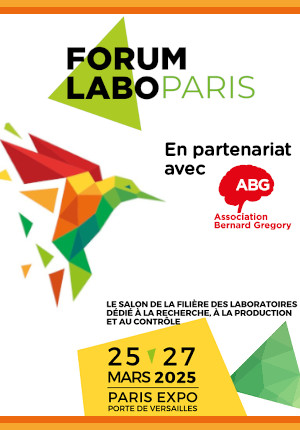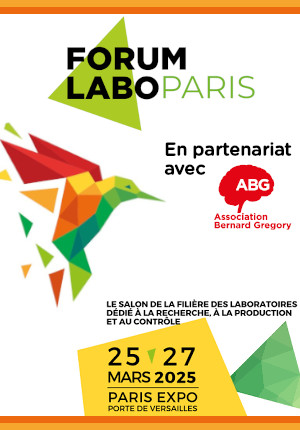Les fines de lin : des bio-sources pour la catalyse métallique et la production durable de molécules cibles anti-aging (LINA) // Flax fines: bio-sources for metal catalysis and sustainable production of anti-aging target molecules (LINA)
|
ABG-128521
ADUM-60169 |
Thesis topic | |
| 2025-02-13 |
Université de Lille
VILLENEUVE D'ASCQ CEDEX - France
Les fines de lin : des bio-sources pour la catalyse métallique et la production durable de molécules cibles anti-aging (LINA) // Flax fines: bio-sources for metal catalysis and sustainable production of anti-aging target molecules (LINA)
- Ecology, environment
sol, métaux, bioressources, catalyseurs, extraction, synthèse
soil, metals, bioresources, catalysts, extraction, synthesis
soil, metals, bioresources, catalysts, extraction, synthesis
Topic description
Le sujet de thèse vise à explorer de nouvelles voies de valorisation des résidus de lin (appelés sons ou fines de lin) qui font suite aux différentes étapes de traitements chimique et mécanique du lin textile (et non du lin oléagineux) travaillé par la PME Van Robaeys Frères située à Killem (59 ; https://www.vanrobaeys.fr/fr). Les voies de valorisation étudiées des anas de lin, des poussières de teillage et des poussières d'affinage dans ce présent projet seront associées aux savoir-faire des équipes « Environment » et « Sustainable Chemistry » du TRD H&E de JUNIA, deux équipes de recherche respectivement rattachées au Laboratoire de Génie civil et géoEnvironnment (LGCgE) et à l'équipe INSERM RIDAGE de l'Université de Lille. C'est à ce titre que les voies de valorisation proposées s'inscrivent pleinement dans les préoccupations liées aux principes de la chimie et de l'ingénierie verte et constituent, à notre connaissance, une approche nouvelle originale des fines de lin. Les objectifs précis de la thèse seront associées à (i) la caractérisation des fines de lin pour la conception de catalyseurs biosourcés homogènes et hétérogènes dont les propriétés chimiques seront caractérisées, (ii) l'extraction de molécules d'intérêt telles que les polyphénols, connus pour être des antioxydants et des inhibiteurs RAGE, (iii) la synthèse de molécules et la fonctionnalisation des molécules extraites via l'utilisation des catalyseurs biosourcés pour l'obtention de meilleurs candidats RAGE et (iv) l'évaluation biologique des polyphénols extraits et des produits issus des synthèses.
------------------------------------------------------------------------------------------------------------------------------------------------------------------------
------------------------------------------------------------------------------------------------------------------------------------------------------------------------
The aim of this thesis is to explore new ways of recovering the flax residues (known as flax shives or flax fines) resulting from the various stages of chemical and mechanical treatment of textile flax (not oilseed flax) processed by the Van Robaeys Frères SME located in Killem (59; https://www.vanrobaeys.fr/fr). The ways of recycling flax shives, scutching dusts and refining dusts studied in this project will be combined with the expertise of the “Environment” and “Sustainable Chemistry” teams of JUNIA's TRD H&E, two research teams respectively attached to the Laboratoire de Génie civil et géoEnvironnment (LGCgE) and the INSERM RIDAGE team at the University of Lille. It is for this reason that the proposed ways of valorization are fully in line with the preoccupations linked to the principles of chemistry and green engineering and constitute, to our knowledge, a new and original approach to flax fines. The precise objectives of the thesis will be associated with (i) the characterization of flax fines for the design of homogeneous and heterogeneous biosourced catalysts whose chemical properties will be characterized, (ii) the extraction of molecules of interest such as polyphenols, known to be antioxidants and RAGE inhibitors, (iii) the synthesis of molecules and the functionalization of the extracted molecules via the use of biosourced catalysts to obtain better RAGE candidates, and (iv) the development of biosourced catalysts.
------------------------------------------------------------------------------------------------------------------------------------------------------------------------
------------------------------------------------------------------------------------------------------------------------------------------------------------------------
Début de la thèse : 01/10/2025
WEB : http://www.vanrobaeys.fr/fr
------------------------------------------------------------------------------------------------------------------------------------------------------------------------
------------------------------------------------------------------------------------------------------------------------------------------------------------------------
The aim of this thesis is to explore new ways of recovering the flax residues (known as flax shives or flax fines) resulting from the various stages of chemical and mechanical treatment of textile flax (not oilseed flax) processed by the Van Robaeys Frères SME located in Killem (59; https://www.vanrobaeys.fr/fr). The ways of recycling flax shives, scutching dusts and refining dusts studied in this project will be combined with the expertise of the “Environment” and “Sustainable Chemistry” teams of JUNIA's TRD H&E, two research teams respectively attached to the Laboratoire de Génie civil et géoEnvironnment (LGCgE) and the INSERM RIDAGE team at the University of Lille. It is for this reason that the proposed ways of valorization are fully in line with the preoccupations linked to the principles of chemistry and green engineering and constitute, to our knowledge, a new and original approach to flax fines. The precise objectives of the thesis will be associated with (i) the characterization of flax fines for the design of homogeneous and heterogeneous biosourced catalysts whose chemical properties will be characterized, (ii) the extraction of molecules of interest such as polyphenols, known to be antioxidants and RAGE inhibitors, (iii) the synthesis of molecules and the functionalization of the extracted molecules via the use of biosourced catalysts to obtain better RAGE candidates, and (iv) the development of biosourced catalysts.
------------------------------------------------------------------------------------------------------------------------------------------------------------------------
------------------------------------------------------------------------------------------------------------------------------------------------------------------------
Début de la thèse : 01/10/2025
WEB : http://www.vanrobaeys.fr/fr
Funding category
Funding further details
Partenariat d'entreprises ou d'associations
Presentation of host institution and host laboratory
Université de Lille
Institution awarding doctoral degree
Université de Lille
Graduate school
104 Sciences de la Matière du Rayonnement et de l'Environnement
Candidate's profile
Chimiste, autonomie, curieux, rigoureux, connaissance de la recherche, esprit d'analyse, bonne qualité rédactionnelle, connaissance des travaux bibliographiques
Chemist, autonomous, curious, rigorous, knowledge of research, good writing skills, knowledge of bibliographic work.
Chemist, autonomous, curious, rigorous, knowledge of research, good writing skills, knowledge of bibliographic work.
2025-07-01
Apply
Close
Vous avez déjà un compte ?
Nouvel utilisateur ?
More information about ABG?
Get ABG’s monthly newsletters including news, job offers, grants & fellowships and a selection of relevant events…
Discover our members
 Laboratoire National de Métrologie et d'Essais - LNE
Laboratoire National de Métrologie et d'Essais - LNE  SUEZ
SUEZ  Aérocentre, Pôle d'excellence régional
Aérocentre, Pôle d'excellence régional  Tecknowmetrix
Tecknowmetrix  Nokia Bell Labs France
Nokia Bell Labs France  MabDesign
MabDesign  ANRT
ANRT  CESI
CESI  TotalEnergies
TotalEnergies  Institut de Radioprotection et de Sureté Nucléaire - IRSN - Siège
Institut de Radioprotection et de Sureté Nucléaire - IRSN - Siège  PhDOOC
PhDOOC  Ifremer
Ifremer  Institut Sup'biotech de Paris
Institut Sup'biotech de Paris  Généthon
Généthon  CASDEN
CASDEN  ADEME
ADEME  MabDesign
MabDesign  ONERA - The French Aerospace Lab
ONERA - The French Aerospace Lab  Groupe AFNOR - Association française de normalisation
Groupe AFNOR - Association française de normalisation










